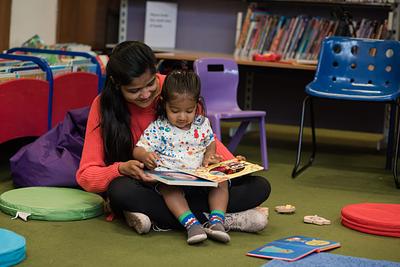Looking for all Articles by Marie Gallagher?
Exploring children's rights through picture books
How picture books can help children understand their rights

Celebrated each year on 20 November, World Children's Day marks the date in 1959 when the UN General Assembly adopted the Declaration on the Rights of the Child. Exactly 30 years later, the same coalition adopted the Convention on the Rights of the Child, which we have come to know more commonly as the UNCRC(this link will open in a new window). Countries across the world, including Scotland and the UK, have signed up to this, committing to make children's rights a priority in law, policy and service provision. There is even a possibility that the UNCRC will become enshrined in Scots law in the near future.
The first Article of the UNCRC states that children should know about the convention and the rights within it and that grown-ups have a responsibility to help children understand their rights. However, this can feel like a big and abstract concept for practitioners, parents and carers to explain to children, particularly in the early years. How do we begin to open up these conversations about rights in a way that is fun, engaging and age appropriate? At Bookbug, we believe that picture books are the best place to start, so we've created some top tips for using them to explore the UNCRC.
Don't worry about 'correct' terminology
When helping younger children understand their rights, it is okay if we don't directly mention the word 'rights' or use picture books specifically relating to the UNCRC (although many lovely ones do exist – take a look at our book list for inspiration). We can take a holistic and informal approach, whether as part of the early years curriculum or choosing books and activities for the home. The Children's Parliament explains children's rights as things that all children need to feel healthy, happy and safe. That gives us lots of scope for fun and creativity when exploring children's rights with our little ones!
Bring rights to life through character-driven stories
When choosing narrative books, think about stories that need something to change in order for the main character to be healthy, happy and safe. Often this will relate to a fundamental human need, whether emotional or physical. Also, consider the role of the adults within the story – what do they do (or not do) to help? Are they present or absent? Children need to know that the role of grown-ups is to make sure their rights are met.
Have fun with concept books
There are lots of picture books designed to explain ideas or activities through illustrations, engaging rhymes or interactive elements. Many relate to core learning areas such as numbers, shapes, the alphabet or daily routines. In addition to these, lots of children's authors and illustrators provide opportunities to learn about feelings and the diversity of people and the world around them. For example, in Happy To Be Me by Emma Dodd, bold, expressive illustrations and diverse characters highlight all of the things our bodies and minds do for us every day and celebrates the importance of love and friendship. You Choose by Nick Sharratt inspires children to imagine the reality of different types of people, activities and environments and what topics they would like to explore. These concept books are fantastic in supporting the development of emotional literacy and empathy.
Opportunities for choice and participation
As well as books themselves, think about the child's role in book sharing and the environment in which books are shared. Article 12 of the UNCRC states that children have the right to express their views and be listened to. Picture books are an excellent vehicle for helping children feel confident about sharing their opinions and influencing activities. Think about the following key questions when creating participative and inclusive book sharing opportunities:
- Do children have the chance to choose books and express their preferences?
- Are picture books visible and physically accessible to the children in your setting?
- Is there diversity in terms of characters, subject matter and authors/illustrators from a variety of backgrounds?
- How can we enrich children's experience of interacting with books through play and creative opportunities?
Celebrate – you are supporting children's rights through the joy of book sharing!
Simply by sharing books with children and building them into our daily routines, we are doing a great deal to promote children's rights, including the right to learn and play, social and emotional development, cultural activities and much more. Book sharing promotes positive relationships between children and their families, which is a perfect basis for children to begin confidently understanding and articulating their rights in a safe and supportive space as they grow.
Take a look at our book list for inspiration on getting started with children's rights and, of course, get in touch to share your suggestions!